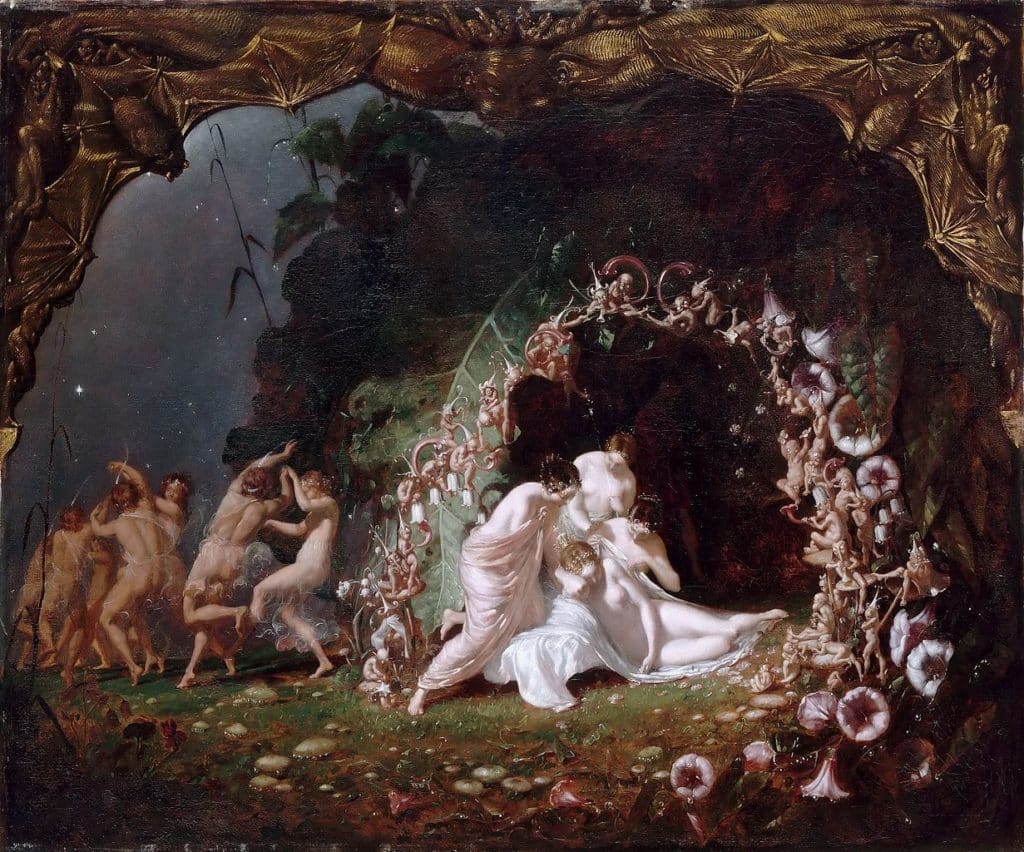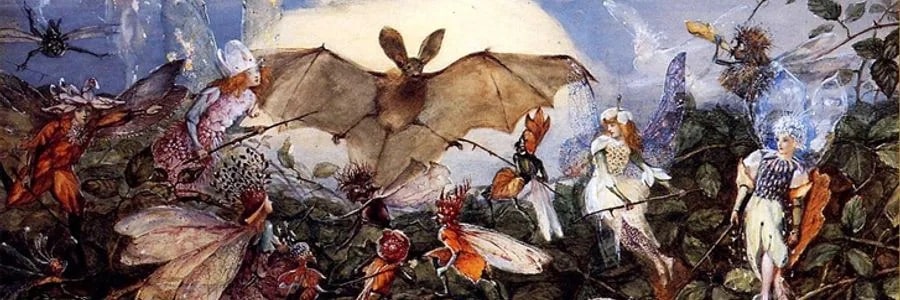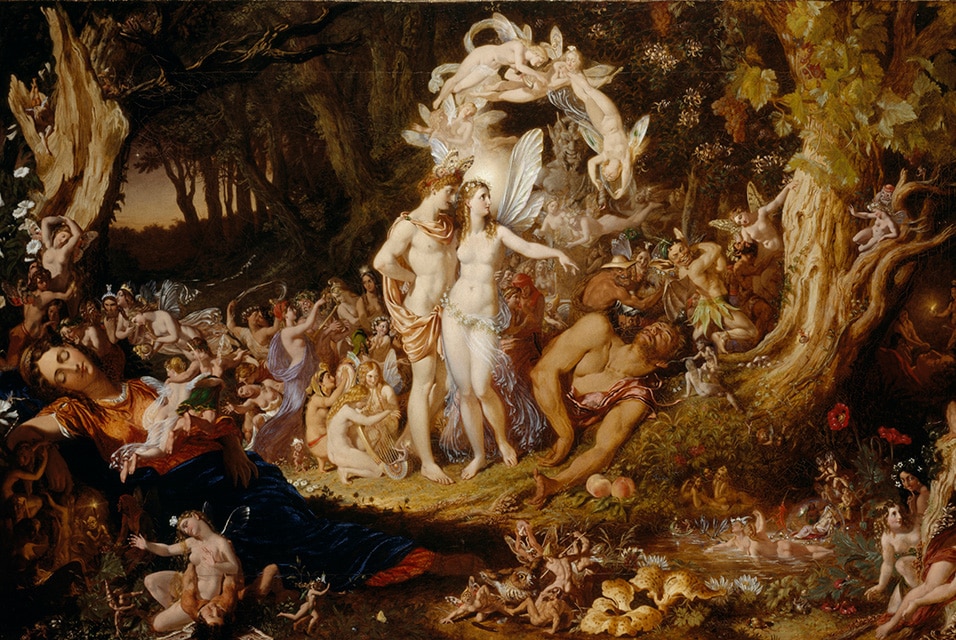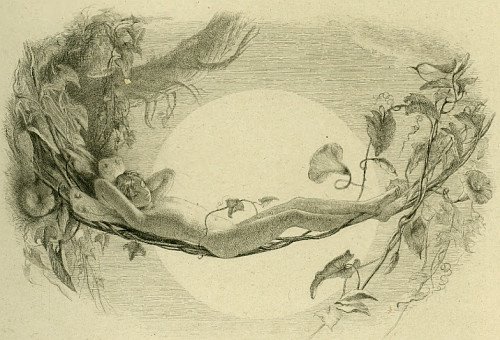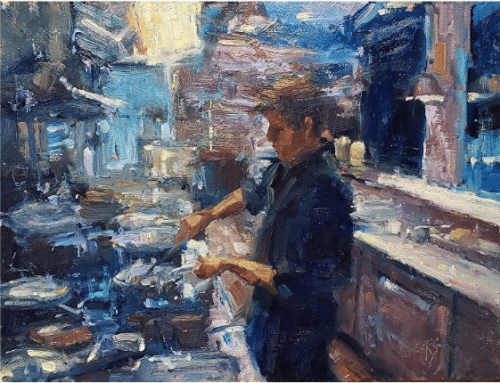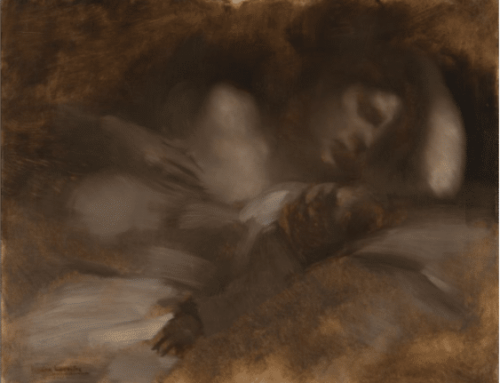Artists for hundreds of years have been beguiled by the fantastic and magical characters in Shakespeare’s plays, especially A Midsummer Night’s Dream and The Tempest.
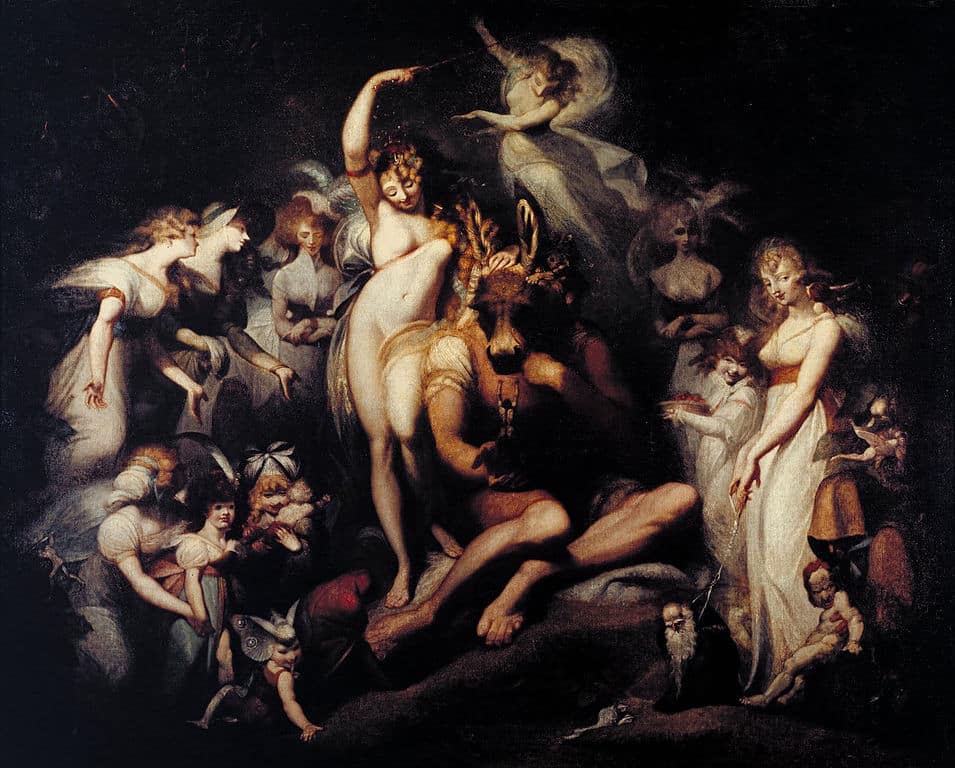
Henry Fuseli, Titania and Bottom, 1790
The fairies of A Midsummer Night’s Dream in particular appear in numerous illustrations and paintings of varied description. Artists have generally pictured the summer haunts of the fairies as romantic, rural places lush with dew-heavy wildflowers to sleep under, acorn cups to hide in, and all spiced with the scent of herbs and grasses. (The painting and illustrations of fairies is so vast – and don’t laugh, this is serious business, even Turner painted them! – that it’s literally its own genre.)
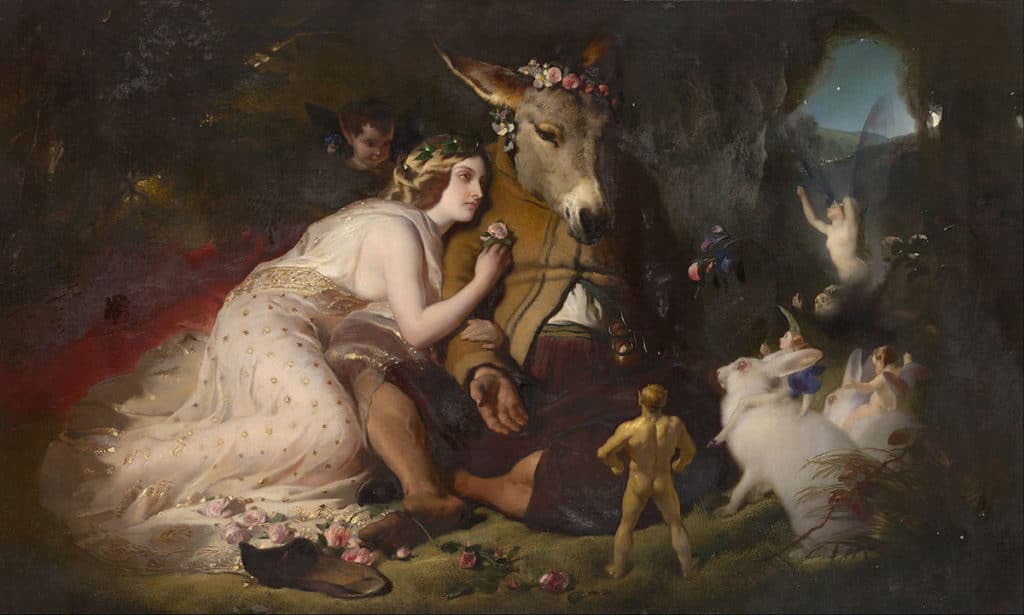
Edward Landseer, Scene from A Midsummer Night’s Dream, Titania and Bottom, c. 1875
Titania, the Queen of the Fairies, sleeps upon
“a bank where the wild thyme blows,
Where oxlips and the nodding violet grows,
Quite over-canopied with luscious woodbine,
With sweet musk-roses and with eglantine:
There sleeps Titania some time of the night,
Lull’d in these flowers with dances and delight;
And there the snake throws her enamell’d skin,
Weed wide enough to wrap a fairy in.”Richard Dadd, Titania Sleeping, c. 1875
Titania also tells how the fairies meet:
“on hill, in dale, forest, or mead,
By paved fountain, or by rushy brook.
Or in the beached margent of the sea.”
“Come, now a roundel and a fairy song;
Then, for the third part of a minute, hence;
Some to kill cankers in the musk-rose buds,
Some war with rere-mice (i.e. bats) for their leathern wings,
To make my small elves coats.”Fairies battling a bat in hopes to make fur coats at the request of their queen. (Victorian book illustration)
When Titania falls in love with another character in the play, the captive Prince Oberon, she tells her elves to spoil her lover thus:
“Hop in his walks and gambol in his eyes;
Feed him with apricocks and dewberries.
With purple grapes, green figs, and mulberries;
The honey bags steal from the humble-bees.
And for night tapers crop their waxen thighs
And light them at the fiery glow-worm’s eyes.
To have my love to bed, and to arise;
And pluck the wings from painted butterflies
To fan the moonbeams from his sleeping eyes.”
Joseph Noel Paton, The Reconciliation of Titania and Oberon, 1877
And now, our revels nearly ended, may we drink our fill of summer’s cup (though it be no longer full), and save a toast for the spirit called Ariel, whose song in “The Tempest” goes this way:
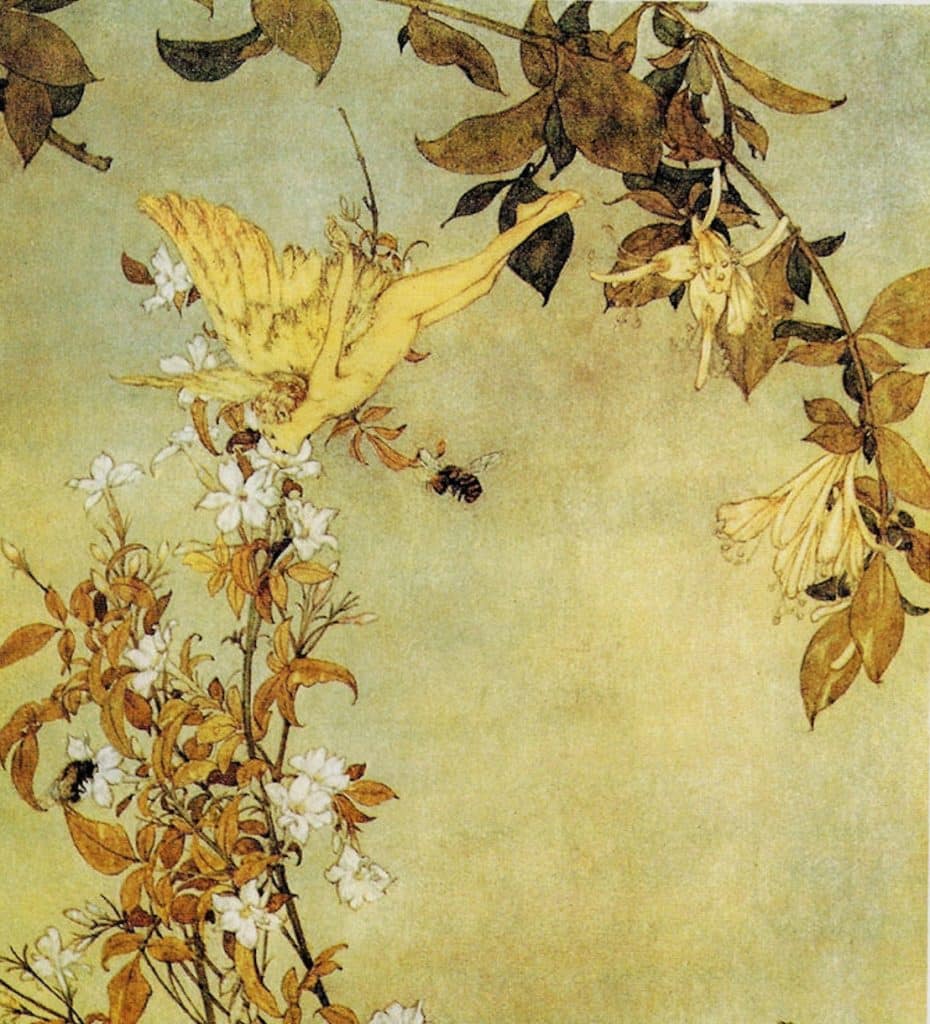
Edmund Dulac, “Ariel. Where the bee sucks, there suck I, 1908”
“Where the bee sucks, there suck I:
In a cowslip’s bell I lie;
There I couch when owls do cry,
On the bat’s back I do fly
After summer merrily.
Merrily, merrily shall I live now
Under the blossom that hangs on the bough.”
Ariel, Richard Redgrave


